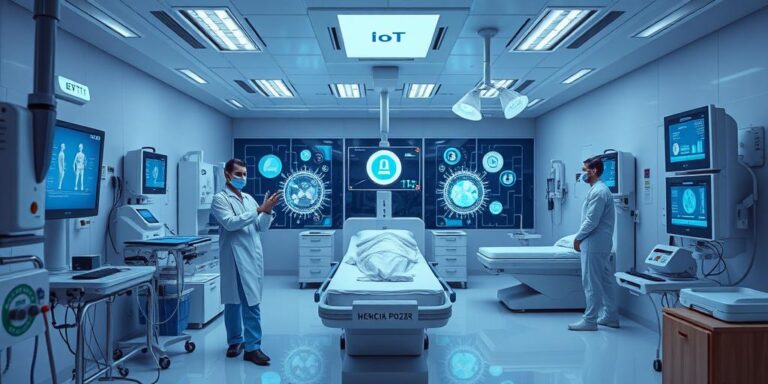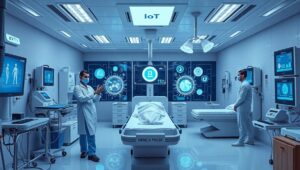Smart Hospitals: IoT for Efficiency and Better Outcomes (2027)
In 2027, the healthcare landscape is being revolutionized by the integration of the Internet of Things (IoT) in hospitals. Smart hospitals are leveraging connected devices and data analytics to enhance efficiency, improve patient outcomes, and reduce costs. This article explores the key applications and benefits of IoT in modern healthcare facilities.
Enhanced Patient Monitoring
IoT devices enable continuous and remote patient monitoring. Wearable sensors track vital signs, such as heart rate, blood pressure, and oxygen levels, providing real-time data to healthcare providers. This allows for early detection of anomalies and timely intervention, reducing the risk of complications. Remote monitoring is particularly beneficial for patients with chronic conditions, enabling them to receive care from the comfort of their homes.
Improved Asset Management
Managing medical equipment and supplies can be a significant challenge for hospitals. IoT-enabled asset tracking solutions use sensors and RFID tags to monitor the location and status of equipment, ensuring that critical resources are always available when needed. This reduces equipment downtime, minimizes waste, and improves overall operational efficiency.
Optimized Workflow
IoT is streamlining hospital workflows by automating various tasks and processes. Smart beds can automatically adjust to patient preferences and alert nurses when assistance is needed. Smart medication dispensers ensure that patients receive the correct dosage at the right time, reducing medication errors. These automations free up healthcare staff to focus on more critical tasks, such as patient care.
Real-Time Data Analytics
The vast amount of data generated by IoT devices is analyzed using advanced analytics tools to identify trends and patterns. This data-driven approach enables hospitals to make informed decisions about resource allocation, staffing levels, and treatment protocols. Predictive analytics can also be used to anticipate potential outbreaks of infectious diseases, allowing hospitals to take proactive measures to protect patients and staff.
Enhanced Security
As hospitals become more connected, cybersecurity becomes a critical concern. IoT devices are often vulnerable to cyberattacks, which can compromise patient data and disrupt hospital operations. Smart hospitals are implementing robust security measures, such as network segmentation, encryption, and intrusion detection systems, to protect against cyber threats.
Challenges and Opportunities
Despite the numerous benefits, the adoption of IoT in hospitals also presents several challenges. These include the high cost of implementation, the need for interoperability between different devices and systems, and concerns about data privacy and security. However, as technology continues to evolve and costs decrease, the opportunities for IoT in healthcare are immense.
Smart hospitals are transforming the way healthcare is delivered. By leveraging IoT technology, hospitals can improve efficiency, enhance patient outcomes, and reduce costs. As the healthcare industry continues to embrace digital transformation, the role of IoT will only become more prominent in the years to come.




